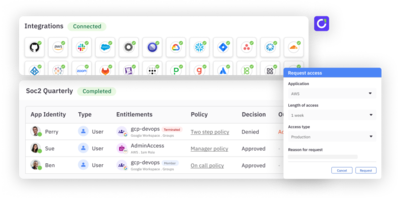What is authentication?
Authentication is the identity verification of a user, device, or system. It is the process of confirming that a user is who they claim to be, and is the first step in the process of granting access to resources and systems.
There are several types of authentication and authentication systems that can be used, including:
- Something you know: This includes passwords, one-time PINs (OTPs), and security questions.
- Something you have: This includes ID tokens such as security and access tokens, smart cards, mobile phones, and USB drives.
- Something you are: This includes biometric authentication through identifiers such as fingerprints, facial recognition, and voice recognition.
- Something you do: This includes behavioral biometrics such as keystroke dynamics, mouse movement, and behavioral patterns.
User authentication can be performed by a single method, but it is more secure to use two-factor authentication (2FA) or multi-factor authentication (MFA), which combine two or more methods. This makes it more difficult for an attacker to gain unauthorized access, as they would need to successfully impersonate the user across multiple authentication methods. Most organizations also use single-sign on (SSO) to make it easier and more secure for users to authenticate to systems.
Authentication is an important aspect of cybersecurity, as it ensures that only authenticated users, devices, and systems have access to resources, thus reducing the risk of a security breach and other malicious activity. The authentication process also helps organizations to meet regulatory compliance and industry standards, as it ensures that only the approved users have access to the data they need to do their jobs.
What is authorization?
Authorization is the process of determining what level of access a user, device, or system should have to specific resources, after the identity of the user has been verified through the process of authentication.
Once a user or device has been authenticated, authorization is used to determine what actions they are allowed to perform, such as accessing specific databases and network resources in order to do their job.
Authorization can be implemented using a variety of access control methods, including:
- Policy-based access control (PBAC): Access is granted based on predefined policies that consider attributes such as role, object type, and environment to determine user access.
- Role-based access control (RBAC): User permissions are assigned to specific roles, and access is granted based on the role rather than the individual user.
- Attribute-based access control (ABAC): Attributes of the user or device, such as location, time, or device type are used to determine whether to grant access.
- Rule-based access control (RBAC): Access is granted based on a set of predefined rules that specify what actions are allowed for specific users, devices, or systems.
Authorization systems are closely related to the principle of least privilege, and through implementing an authorization process, organizations can reduce the potential damage caused by a security breach or by a user with malicious intent.
Authentication vs authorization: Key differences
Authentication and authorization are both important aspects of identity and access management (IAM), but they serve different purposes. Authentication works to verify who someone is, while authorization is the process of determining what that person is allowed to do. Authentication is a prerequisite for authorization, as it is necessary to know the identity of a user or device before determining what access rights they should have. Together, authentication and authorization help to ensure that only authorized users, devices, and systems have access to sensitive information, and only to the level necessary, thus increasing the safety of the more sensitive materials.
Summary
Authentication is determining whether or not the identity is given or withheld access, while authorization is the determination of what access is granted after verification. Even though they appear and sound like very similar actions, they play very different roles in access controls and management. When using both authentication and authorization, organizations can meet regulatory compliance and industry standards, secure access to sensitive data, reduce the risk of data breaches, and ensure the security of their data.

